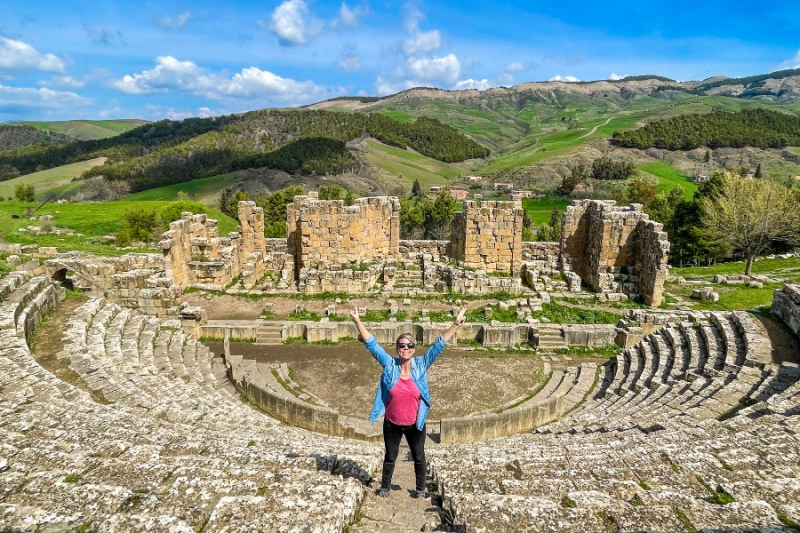Khamissa
Khamissa, also known as Thubursicum Numidarum or Thubursicum, is an old Roman and Byzantine archeological site in northeastern Algeria's Souk Ahras Province.
Khamissa lies 40 kilometers (25 miles) southeast of Guelma, known as Calama by ancient Roman settlers, and 32 kilometers (20 miles) northwest of Souk Ahras, known as Thagaste by ancient Berbers and Romans. . It is located around 250 kilometers (160 miles) west of Carthage.
Originally, the site was a primary settlement of a Numidian Berber tribe. This is most likely the city to which Tacitus refers in connection with the insurrection of Tacfarinas during Tiberius' reign (15 CE to 24 CE). Khamissa, previously known as Thubursicum, was a Roman town in the Maghreb created approximately 100 CE by Emperor Trajan, who advanced it to the status of municipium (Municipium Ulpium Traianum Augustum Thubursicu). Its inhabitants became members of the Papiria tribe. By 270 CE, it had become a colonia (Roman colony).
Khamissa became the seat of a bishopric, with a rectangular basilica with marble walls built in the second century. Augustine of Hippo (St. Augustine) visited it twice. From 391 to 430, he served as a priest, coadjutor Bishop, and Bishop in the regionally local Hippo Regius.
From 435 until 534, the town was a member of the Vandalic Kingdom of Carthage. In 534, the East Roman Empire (Byzantine Empire) reconquered it during the Vandalic War and built a Byzantine-style chapel and modest forts. It was under the control of the Byzantine Praetorian Prefecture of Africa and the Exarchate of Africa until the Muslim conquest of the Maghreb in 698.
Archaeological excavations from 1900 to 1922 cleared only a small portion of the settlement site. The majority of the artifacts collected during the time, particularly the Ancient Roman statues, are now housed at the Guelma Museum in Algeria.
Location: Souk Ahras Province, Algeria






